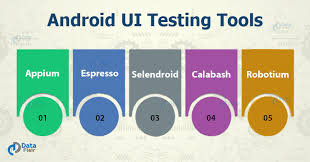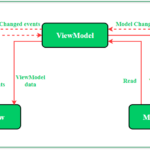
A Beginner’s Guide to Writing Unit Tests in Android
 Unit testing is a critical component of software development that ensures your code works as expected. In the context of Android development, unit tests help verify the functionality of individual components like Activities, ViewModels, and business logic classes. This guide will walk you through the process of writing unit tests for your Android application using JUnit and Mockito.
Unit testing is a critical component of software development that ensures your code works as expected. In the context of Android development, unit tests help verify the functionality of individual components like Activities, ViewModels, and business logic classes. This guide will walk you through the process of writing unit tests for your Android application using JUnit and Mockito.
What is Unit Testing?
Unit testing involves testing individual units of code to ensure they perform as expected. A unit can be a single function, a method, or a class. By isolating each part of the program, unit tests can help detect issues early in the development cycle.
Need Debugging? – Try RobotQA and Start Debugging on Real Devices. Download Plugin
Why Unit Testing?
- Early Bug Detection: Catch bugs early before they make it into production.
- Documentation: Tests act as a form of documentation that explains how the code is supposed to work.
- Refactoring Safety: Ensure that changes in code do not break existing functionality.
- Simplified Debugging: Isolate specific parts of the codebase to test in isolation.
Setting Up Your Android Project for Unit Testing
- Add Dependencies: Ensure your
build.gradlefile includes the necessary dependencies for JUnit and Mockito.
dependencies {
testImplementation 'junit:junit:4.13.2'
testImplementation 'org.mockito:mockito-core:3.11.2'
testImplementation 'org.mockito:mockito-inline:3.11.2'
}
- Directory Structure: Create a directory named
testundersrcto place your unit test files. This is where you’ll write your test cases.
- src
- main
- test
- java
- com
- yourpackage
Writing Your First Unit Test
Let’s consider a simple example where we have aCalculator class with a method add(int a, int b) that returns the sum of two integers.
Calculator.java
public class Calculator {
public int add(int a, int b) {
return a + b;
}
}
CalculatorTest.java
import static org.junit.Assert.assertEquals;
import org.junit.Test;
public class CalculatorTest {
@Test
public void testAdd() {
Calculator calculator = new Calculator();
int result = calculator.add(2, 3);
assertEquals(5, result);
}
}
- Explanation:
@Testannotation marks thetestAddmethod as a test case.assertEqualsis used to assert that the expected value (5) matches the actual value returned by theaddmethod.
Writing Tests with Mockito
Mockito is a powerful mocking framework that allows you to create and configure mock objects for testing. Suppose you have aUserService class that depends on a UserRepository interface.
UserService.java
public class UserService {
private UserRepository userRepository;
public UserService(UserRepository userRepository) {
this.userRepository = userRepository;
}
public User getUserById(int id) {
return userRepository.findById(id);
}
}
UserServiceTest.java
import static org.mockito.Mockito.*;
import static org.junit.Assert.*;
import org.junit.Before;
import org.junit.Test;
import org.mockito.Mock;
import org.mockito.MockitoAnnotations;
public class UserServiceTest {
@Mock
private UserRepository userRepository;
private UserService userService;
@Before
public void setUp() {
MockitoAnnotations.initMocks(this);
userService = new UserService(userRepository);
}
@Test
public void testGetUserById() {
User mockUser = new User(1, "John Doe");
when(userRepository.findById(1)).thenReturn(mockUser);
User user = userService.getUserById(1);
assertEquals("John Doe", user.getName());
}
}
- Explanation:
@Mockannotation creates a mock instance ofUserRepository.MockitoAnnotations.initMocks(this)initializes the mock objects.when(...).thenReturn(...)sets up the behavior of the mock object.assertEqualsasserts that the returned user’s name matches the expected value.
Running Your Unit Tests
You can run your unit tests directly from Android Studio:- Right-click on the test file or directory in the Project view.
- Select
Run 'Tests in ...'.
./gradlew test










